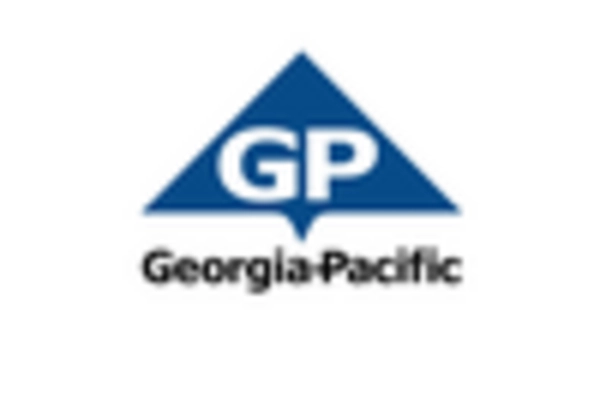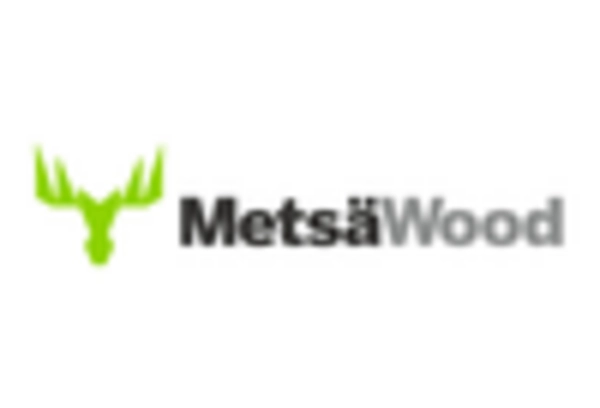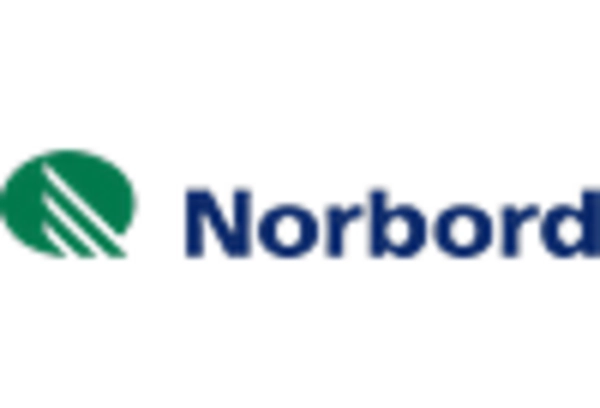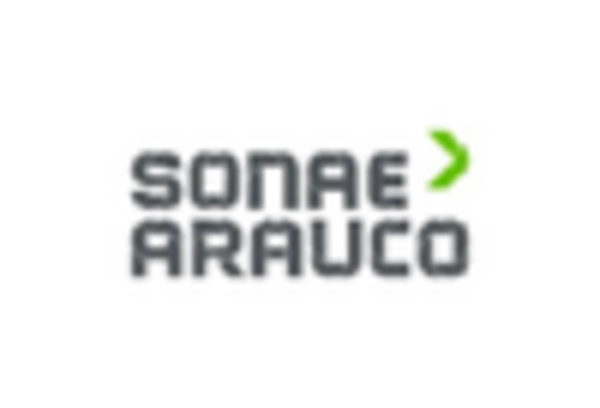Urbanization and Housing Demand
Urbanization trends in Germany are contributing to an increased demand for housing, which in turn fuels the engineered wood market. As more people migrate to urban areas, the need for efficient and sustainable housing solutions becomes paramount. Engineered wood products are particularly appealing in this context due to their lightweight nature and ease of installation, which can expedite construction timelines. The engineered wood market is likely to see a growth rate of around 9% as urban housing projects increasingly incorporate these materials. This trend reflects a broader shift towards modern construction practices that prioritize both speed and sustainability.
Innovations in Manufacturing Processes
Innovations in manufacturing processes significantly influence the engineered wood market in Germany. Advances in technology have led to the development of more efficient production methods, which enhance the quality and performance of engineered wood products. For instance, the introduction of advanced adhesives and bonding techniques has improved the durability and strength of these materials. As a result, the engineered wood market is witnessing a surge in product offerings that cater to diverse applications, from residential to commercial construction. In 2025, it is estimated that the market will see a 10% increase in the adoption of engineered wood products due to these innovations, indicating a robust growth trajectory.
Rising Demand for Eco-Friendly Materials
The engineered wood market in Germany experiences a notable increase in demand for eco-friendly materials. This trend is driven by a growing awareness of environmental issues among consumers and businesses alike. As sustainability becomes a priority, many construction projects are shifting towards materials that minimize ecological impact. Engineered wood products, which utilize less timber and often incorporate recycled materials, align well with these preferences. In 2025, the market for engineered wood in Germany is projected to grow by approximately 8% annually, reflecting this shift. The engineered wood market is thus positioned to benefit from this rising demand, as it offers a viable alternative to traditional wood products, appealing to environmentally conscious consumers and builders.
Consumer Preference for Aesthetic Versatility
Consumer preferences in Germany are shifting towards materials that offer aesthetic versatility, which positively impacts the engineered wood market. Engineered wood products can be designed to mimic the appearance of solid wood while providing enhanced durability and stability. This aesthetic appeal is particularly attractive to architects and designers who seek to create visually appealing spaces without compromising on performance. The engineered wood market is expected to capitalize on this trend, with a projected growth of 6% as more consumers opt for engineered wood in their interior design choices. This shift indicates a broader acceptance of engineered wood as a stylish and functional alternative in various applications.
Government Initiatives Promoting Sustainable Construction
Government initiatives in Germany play a crucial role in promoting sustainable construction practices, thereby impacting the engineered wood market. Various policies and incentives are being introduced to encourage the use of sustainable materials in building projects. For example, the German government has set ambitious targets for reducing carbon emissions in the construction sector, which includes promoting engineered wood as a preferred material. The engineered wood market stands to gain from these initiatives, as they not only enhance the visibility of engineered wood products but also provide financial incentives for builders and developers. This supportive regulatory environment is expected to drive market growth by approximately 7% in the coming years.

















Leave a Comment